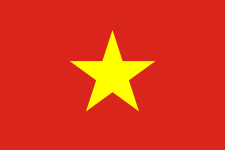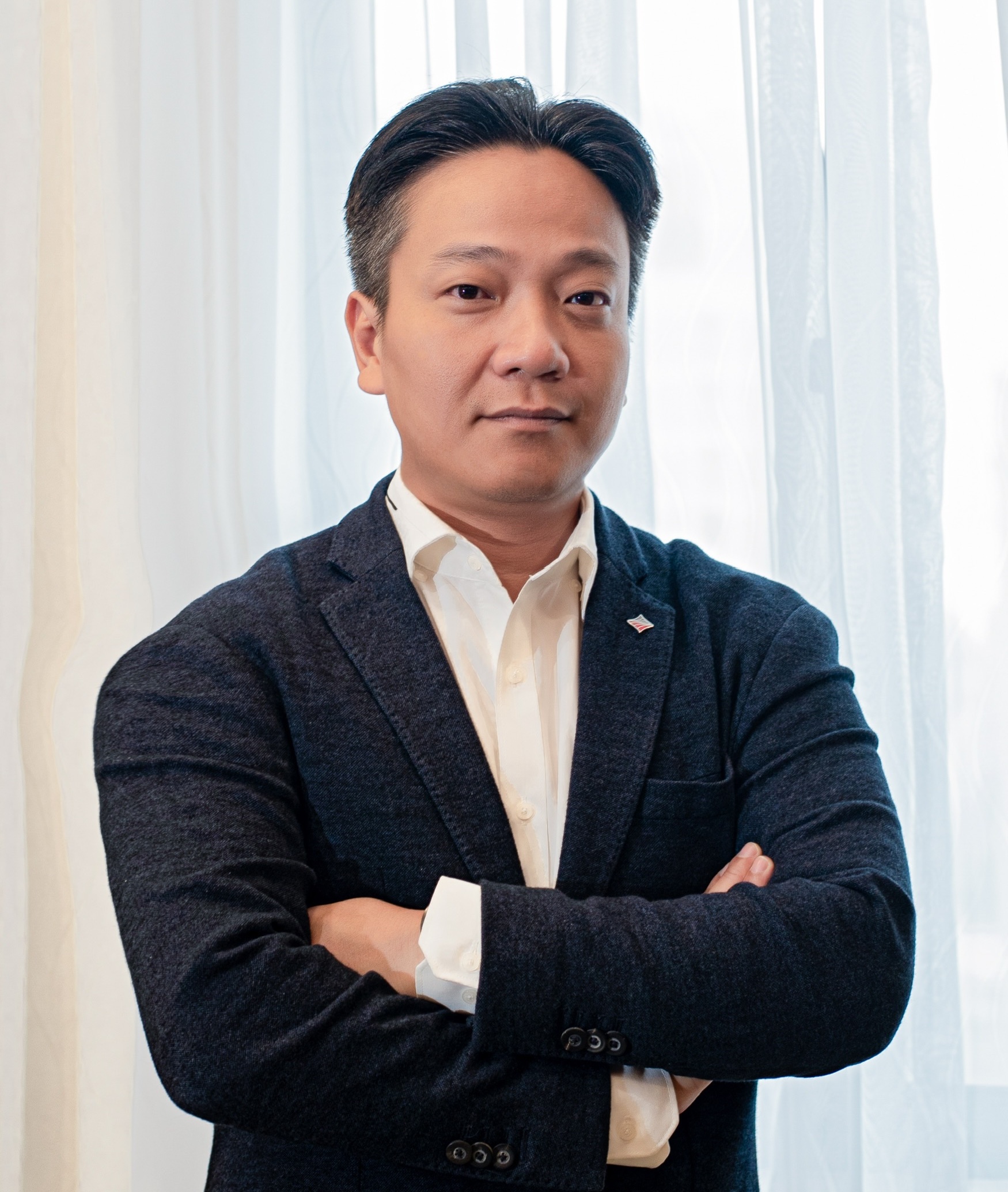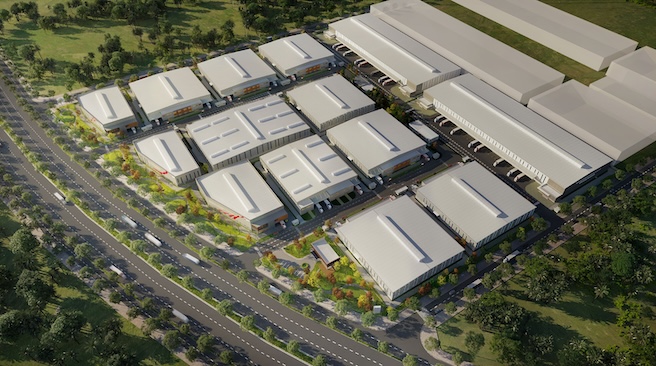When organic becomes an inspiring wellbeing lifestyle
For Tyna Huynh, co-founder of Drinkizz, organic is not just a food choice but a way of life that fosters a deep connection between people, nature and community.




Truong An Duong, General manager of North Vietnam and Residential at Frasers Property Vietnam, talks about the Singaporean developer's aggressive but sustainable expansion into industrial property in Vietnam.
Can you elaborate on the company’s investment plans in Vietnam and what are the key features of your projects compared to others?
Truong An Duong: In Vietnam, we take a long-term view in evaluating opportunities, with industrial and logistics (I&L) as an important focus area for us as the country moves up the supply chain.
We and our strategic partners will develop approximately one million square metre of international grade industrial and logistics facilities in the prime location across North and South Vietnam in the next two to three years with secured land bank.

In the South, some of our recent highlights include Binh Duong Industrial Park near Ho Chi Minh City, our first industrial showcase in Vietnam, where we completed a first phase of ready-built factories and broken ground next phase to cater to the growing market demand in Binh Duong province.
Eco Logistics Centre, an asset under our management, sits on more than 7.5 hectares providing warehousing spaces to sustainability-minded tenants. It has obtained LEED Certification for sustainability efforts.
We continue to see strong market conditions contributing to the overall industrial and logistics market growth in North Vietnam and have expanded our presence to Bac Ninh, Hung Yen and Quang Ninh provinces to seize new opportunities.
In September, we broke ground the first North I&L on Industrial Centre Yen Phong 2C in Bac Ninh province, North Vietnam. This is our maiden project stemming from our partnership with Gelex Group announced earlier this year.
Over the next two to three years, we plan to expand our industrial and logistics portfolio in both northern and southern with approximately 680,000 square metre of industrial facilities with dedicated social and wellness amenities for occupiers.
Our industrial park focused on both the ‘hardware’ and ‘software’ of a development have to be well-built.
We ensure that the ‘hardware’, in this case the specifications of industrial facilities that we deliver, are customer-centric and optimised to be efficient and future-proof.
On the ‘software’ side, we maintain a service-oriented approach, making sure that we keep the people element firmly in focus.
Our I&L developments go beyond expectation as we comprise smart, modern, and sustainable industrial estates designed to our Premium Estates Concept that aims to bring an operation-at-ease place with enhanced workplace productivity and occupiers’ health and wellbeing.
We are aiming for LEED certification for all of our I&L properties as a minimum. These premium industrial estates will not be limited to traditional sheds and warehouses, but instead are future-ready infrastructure that positively impacts the people that work within the space, as well as the wider community.
What has motivated Frasers Property Vietnam to expand operations to the North?
Truong An Duong: Vietnam's economy continues to show promise and resilience in the face of global macroeconomic headwinds, buoyed by significant public investments, rising domestic demand, and strong government support.
Our northern expansion is part of Frasers Property Vietnam’s overall growth plan, bringing us closer to our valued real estate customer base and also enabling us to launch our northern portfolio.
As we grow meaningfully and further our presence in Vietnam over the past two decades, we want to make a lasting impact on creating spaces that are inspiring and good for communities and the environment.
This is in response to meeting the country’s ambition and significant growth of international investments and interest in the industrial and logistics space, especially the growing demand for high-quality, premium industrial estates.
We remained confident that our industrial offerings will cater to tenants’ business needs and add value to Vietnam’s key economic zones to support the country’s growing industrial ambition.

How do you assess the changes in tenants' needs and demands for industrial zones and what have driven these changes?
Truong An Duong: To increase “green” in industrial parks, while the government's general law states that the maximum density of construction in industrial parks is 60 per cent, we only install about 52.3 per cent.
The remainders are park area or other amenities, such as outstanding industrial park infrastructure, including internal road with 40 feet truck/container width, allowing easy and convenient movement, we also build turning points for vehicles easy turn.
In our industrial parks, we are implementing the "park in park" model, which includes the presence of green parks and green paths that run throughout each facility and each phase, assuring inclusive greenness to create a truly integrated green industrial park concept.
We also have multi products with various spaces from 1,000 square metre to more than 20,000 square metre to fulfill all business demands for all types of businesses.
We do see an increasing trend among prospective tenants enquiring on the sustainability standards and performance of both our commercial and industrial spaces.
The demand comes mainly from multinational corporates (MNCs) who, like Frasers Property, take a long-term view and have sustainability as a key agenda.
Other companies are suppliers or have businesses which form part of the value chain of MNCs, and have come onboard this shift towards greater sustainability.
Could you provide examples of green and sustainable features in your industrial zones and what benefits do businesses gain from choosing such properties? Does a higher standard imply a significant increase in rental costs and dow does Frasers Property Vietnam address cost issues in the green industrial zones you develop?
Truong An Duong: Binh Duong Industrial Park (BDIP), our first industrial park development, is striving to achieve LEED Gold Green Building certification standards that focus on enhancing customer-centricity with purpose and innovation.
Following the development of its sustainability roadmap, the industrial park will see a plethora of sustainability features with the adoption of environmentally friendly and advanced technologies to its best-in-class properties which are designed to meet operational efficiency, productivity enhancement, health, and well-being for occupants.
Key features include the construction of a wastewater treatment system, green spaces, and LED low-power-density streetlighting and installation of a rooftop solar panel to generate renewable solar energy for the park’s energy consumption.
It also includes ISC (Industrial Service Centre) at BDIP, where serve tenants with modern, multi-purpose outdoor sports facilities for popular sports like tennis, futsal, basketball.
Other kinds of convenience are included like Zui Bistro, a humble but modern styled restaurant serving authentic Vietnamese cuisine, an air-conditioned lounge, or various sort of vending machines and even bank teller machines for occupier demand.
Besides, there are meetings spaces, equipped with full video-conference facilities, or spaces to hold trainings or even flexible working spaces to accommodate short-term collaboration with business consultants and partners.
The benefits can be mentioned are more energy efficient building; thus saving utilities bills and lower operational cost. Additional emphases are placed on effective waste treatment during construction and operation.
It also brings additional consideration to the comfort, health and wellbeing to our tenant occupying the building with better transport infrastructure and supporting amenities, fresh air, more greenery resulting in comfort.
Having recognized green certification properties are able to command higher demand. I would say investment into obtaining green certification can be paid off within a relatively short period, through higher revenue and lower operational cost.
I can name another example. At BDIP, our industry-leading design features which deliver productive spaces perform beyond conventional factories to maximise the full potential of business, with tenant’s utility cost savings up to VND1.5 billion per year (nearly USD62.000) which means saving 48 per cent energy consumption and 52 per cent water consumption.
As the first real estate company in Vietnam with globally recognised SBTi-approved (Science Based Targets Initiative) targets, Frasers Property Vietnam adopts industry-leading energy management practices to further improve the sustainability credentials of our properties.
For example, we intend to progressively expand the use of renewable energy with the installation of rooftop solar PV, allocate renewable energy for street lighting and introduce energy- and water-efficient building fittings, street lighting and tackling embodied carbon in the construction material that we use for our projects.

What challenges have you been facing in developing green and sustainable facilities, especially industrial zones, in Vietnam compared to neighboring countries like China, Thailand and Indonesia?
Truong An Duong: The landscape for sustainable real estate in Vietnam is fast-growing but ultimately still nascent. Currently, much of the sustainability efforts are driven by corporates, which means that this can be fragmented.
Fortunately, government policies at the highest level for sustainability initiatives are supportive, and as the landscape matures and momentum grows with more sustainability awareness, we believe that these challenges will come to be resolved in time.
For example, in terms of financing, the concept of green financing in Vietnam is also only just taking root; there is certainly room for credit and financial institutions to play a bigger role than they currently do.
Looking to the region, Singapore excels with supportive and progressive regulatory regimes to encourage greater sustainability across sectors. In real estate, taking the lead the Building and Construction Authority (BCA) provides, buildings in Singapore come under a green certification scheme.
The government has also provided various incentives such as awarding additional GFA to green developments, setting clear targets and guidelines, as well as providing the requisite training to support developers and building owners.
Given these challenges, what will you recommend to promote sustainability development in Vietnam?
Truong An Duong: The first one is promoting green building certification.
At Frasers Property Vietnam, our efforts are guided by the Green Mark scheme, as well as internationally-recognised certifications such as LEED, which entail incorporating resource efficient features and design elements that enhance occupants’ productivity, health and wellbeing.
The second one is partnering and supporting green building organization such as a key partner is the Vietnam Green Building Council (VCBC). We support the VCBC by participating in the Technical Advisory Committee, sharing our expertise in green building design and materials, as well as green financing.
We also need to promoting improvement of energy efficiency in existing properties.
The power of partnerships is undeniable. We actively share our experience and as well as updates on green standards compliance with industry peers, as certifications provide a common language for all stakeholders to align ESG actions.
Besides engaging partners in the public and private sector on real estate sustainability, we also work closely with players from different industries to precipitate the implementation of new technologies or solutions that support greener outcomes.
For example, we have partnered Singapore-based utilities group SP Group to develop integrated smart energy solutions at Binh Duong Industrial Park.
For Tyna Huynh, co-founder of Drinkizz, organic is not just a food choice but a way of life that fosters a deep connection between people, nature and community.
Embracing respectful workplaces could very well be the key to unlocking a more prosperous future for Vietnam's garment industry.
Vietnamese businesses have had a long journey with great achievements, and this path will continue and blossom in years to come.
While some jobs are expected to be replaced by emerging AI applications, the technology is broadly seen as a catalyst for positive transformation in the workforce.
The energy transition is bringing forth new challenges, particularly in refining financial systems.
Alex Hambly talks about investment opportunities in Vietnam following his appointment as chief investment officer (CIO) of VinaCapital.